21 Uber, Lyft, and Ride Sharing Statistics
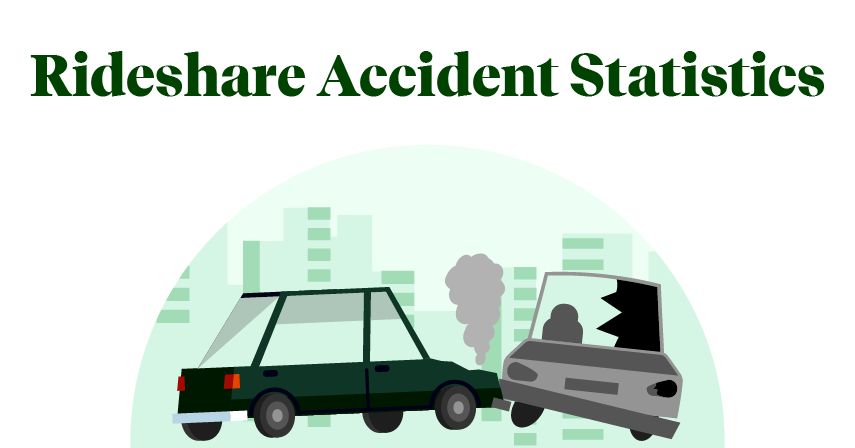
We all feel like ridesharing is a safer option and easier option (thanks to easy access to ridesharing applications), but do we ever stop to wonder how often do rideshare drivers get into accidents?
The ride sharing market is a convenience for the passenger, but this alternative to hiring taxi drivers comes with its own host of issues, particularly for those who find themselves involved in a rideshare accident.
Considering that Uber drivers, Lyft drivers, and other rideshare drivers are independent contractors, is there any way to keep track of rideshare accident facts? One would hope that the local Public Utilities Commission (PUC) would regulate the ride sharing market, but unfortunately, much of the detailed information is being kept from the public.
Here is what you need to know about rideshare statistics, particularly Uber and Lyft accident statistics.
Overcoming the Challenges of Putting Together Accurate Lyft and Uber Accident Statistics
It is unclear how – and if – first responders keep track of accidents that involve Lyft and Uber drivers (or other rideshare drivers) and passengers. Therefore, the Booth School of Business at the University of Chicago developed a model that compares and contrasts car crashes with the rollout of rideshare companies between 2001 and 2016.
3% Increase in Vehicle Accident Deaths.
By comparing the increase of vehicle accidents and adjusting for the fact that more cars are on the road, the experts found that rideshare services could have contributed to an increase of 3% in annual deaths associated with cars. (Booth School of Business)
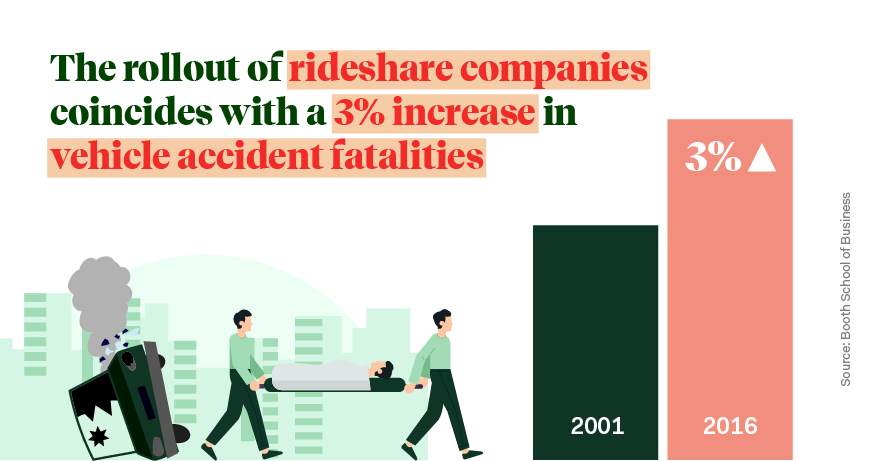
In numbers, the specialists suggest that this involves 987 people each year.
$10 Billion Loss of Statistical Life.
The Department of Transportation calculates how many years of life are lost due to car accidents. It then translates this number into what these Americans could have earned. For individuals involved in deadly accidents with the ride-hailing industry, the possible fatalities reached a $10 billion figure. (Booth School of Business)
Drivers Have Passengers about 39% of Their Driving Time.
This means that 59% of the miles showing them as active on the respective apps could mean that the driver is in between fares. (Booth School of Business)
This understanding further confuses the issue of whether a motorist became engaged in a vehicle accident with a rideshare driver who was active or inactive at the time of the crash.
The obvious flaw of this methodology is that the numbers are purely statistical and do not use raw accident data from the companies. As a result, it is fair to suggest that these numbers are starting points.
Likely Uber and Lyft Accident Statistics
Based on the academic model, it is possible to extrapolate several accident statistics without having to rely on official numbers. Once again, the involvement of rideshare companies is based on a mathematical model.
90% of Accidents Happen in the City.

It makes sense that the majority of accidents take place in the places where most passengers will hire a rideshare driver.
The 90% figure implies that 10% could take place in rural areas or on connecting highways.
1,000 Daily Vehicle Accidents.
While this figure does not mean that 1,000 drivers get into accidents, it does suggest that the rideshare services have a contributing role in 1,000 deaths on American roads each day.
Uber Accident Statistics Claim 97 Fatal Crashes in a One-Year Period.
These numbers cover the period between 2017 and 2018. However, they caused an actual 107 deaths. It is important to note that the fatalities may involve one or more demographics. These are the rider, the driver, or the occupants of the other car.
The Numbers Will Likely Increase
While it is tempting to suggest that these rideshare accident statistics are relatively harmless, it is noteworthy that the numbers of riders and drivers are consistently increasing. Therefore, the seemingly low number of fatal accidents may soon double or triple.
37% Increase in Ridership.
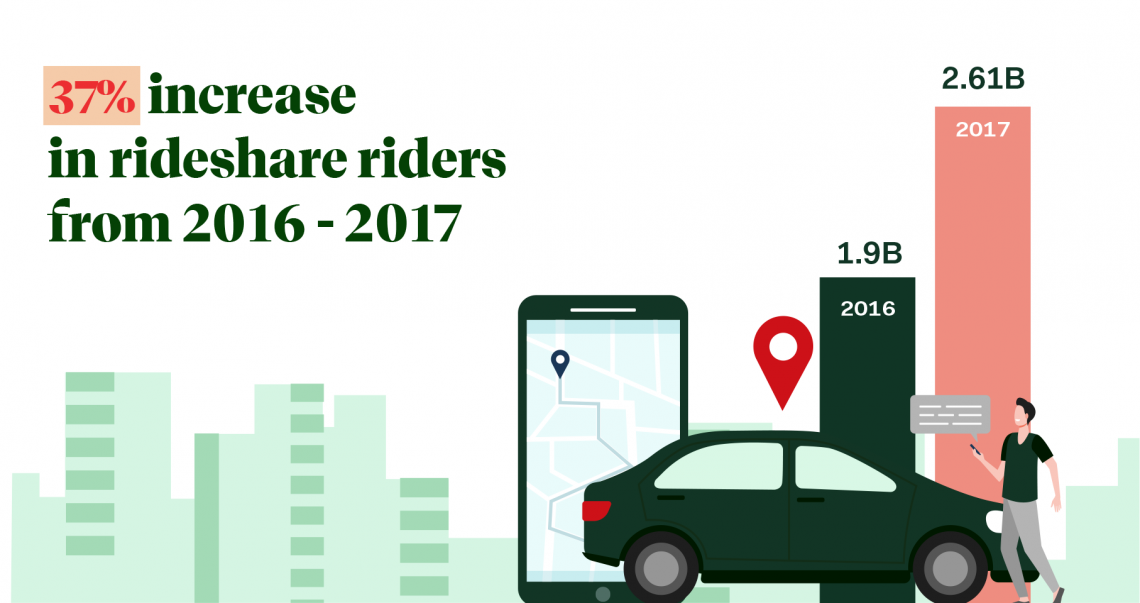
Schaller outlines that there was a 37% increase of riders from 2016 to 2017. In numbers, this means that there were 1.9 billion passengers in 2016. A year later, there were 2.61 billion.
70% of Rides are in Metropolitan Areas.
Places like Los Angeles, San Francisco, and other densely populated areas are the most popular for rideshare drivers. There, Uber and Lyft drivers help residents get to and from work, transport them to leisure activities, and handle short-distance trip such as taking a customer from a car mechanic to their home.
160% Increase in Miles Driven.
It is a common misconception that rideshare vehicles take privately owned cars off the road.
Statistics suggest that the opposite is the case.
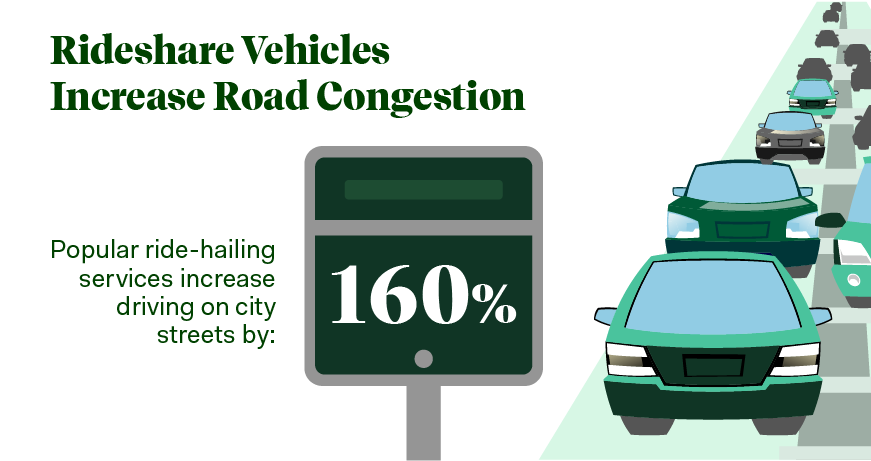
Calculations claim that the presence of rideshare drivers increases the miles driven by 160%.
With this increase also comes an increase in possible accidents.
3% Decline in Public Transit Riders.
An article drafted by the University of California at Davis supports the notion that fewer passengers opt for public transit. They noted a 3% decline since 2014. For example, in San Francisco, one-third of rideshare users select this mode of transportation instead of public transit.
1/3 of Americans Use Rideshare Services as of 2018
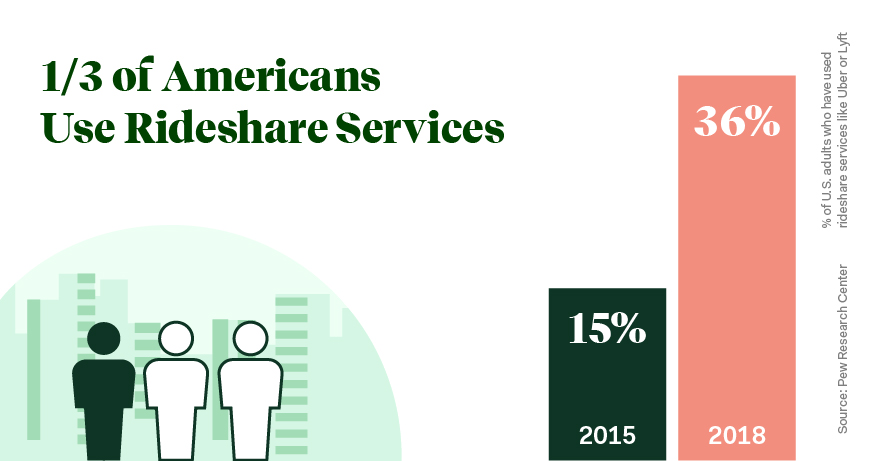
From 2015 to 2018 the proportion of Americans who had used ride share services more than doubled.
According to the latest report from PEW Research Center, 36% of US residents utilized ride-hailing services such as Uber or Lyft.
Uber Statistics — Safety and Accidents
Although notoriously close-mouthed about their accident statistics, Uber did release one report about its safety record. It covers the United States and focuses on the year 2017 to 2018. Moreover, it cautions readers to understand that other forms of transportation also face some problems rideshare companies have to deal with.
All the following stats are sourced from this report.
45 Rides per Second.
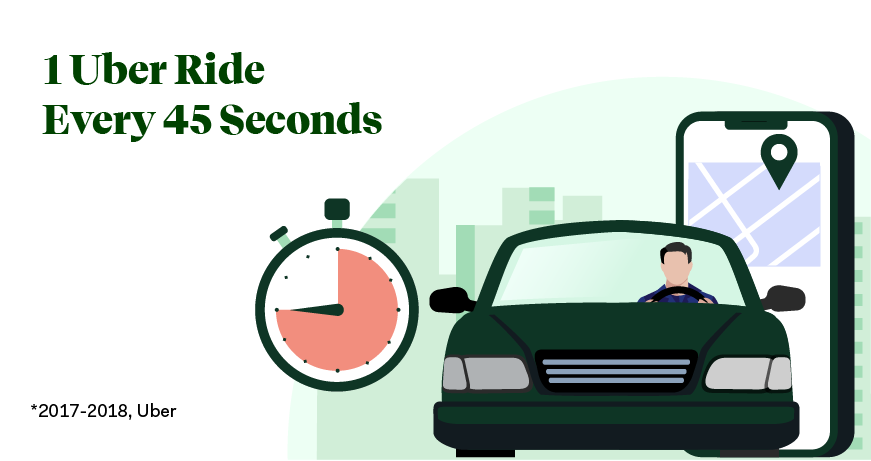
The company states that in the year they logged four billion rides, which is the equivalent of one Uber ride every 45 seconds.
1.4% of Support Requests.
These support requests cover everything from lost items to refund disagreements. In some cases, they also give feedback.
0.1% of Support Requests Noted Safety Issues.
Customers reported incidents of “harsh braking” or arguments as being safety issues.
0.0003% of Requests References a Critical Safety Issue.
This issue may include a traffic death, a deadly assault, or sexual assault.
8 Fatalities while Outside the Vehicle.
Of the 107 fatalities the company acknowledges, eight happened while a driver or rider was outside the vehicle, which makes them statistically a pedestrian. Bicycle riders were affected in 2% of cases.
1 Fatal Physical Assault in Every 122,000,000 trips.
The company explains that its fatal physical assault rate is 0.000001%.
45% of Riders Were Accused of Sexual Assault.
Uber recognizes five categories of sexual assault. Company officials point out that 45% of accused parties were the riders, not the drivers. Moreover, from 2017 to 2018, the company noted a 16% decrease in cases fitting in this category.
At the time of the writing of this post, there was no official Lyft report or Lyft driver statistics available for comparison.
Another View of Rideshare Accident Statistics
Taking Uber at its word would mean that the company has a very small percentage of problems. However, a recent California Public Utilities Commission (CPUC) filing begs to differ or at least puts a different spin on the figures.
1,243 of 5,981 Incidents of Claimed Sexual Assault Occurred in California.
In other words, 21% of the cases cited took place in the Golden State as opposed to another location. (CPUC)
Footnote 42 Prevents Public Disclosures.
The SF Public Press faults the PUC for failing to disclose raw data by citing footnote 42. This means that the data currently available is carefully curated.
$3.8 Million in Fines to LAX.
One example of data not readily available is the $3.8 million figure uncovered by Vice, which referred to fines Uber drivers had to pay to LAX.
Civil Suits Payout?
Another caveat to consider is that rideshare companies pay out in civil suits. However, due to the nature of the settlements, the figures or the actions leading to the suits are not being disclosed. Therefore, it is difficult to assess what the true Uber, Lyft, and overall rideshare accident rates might be.
